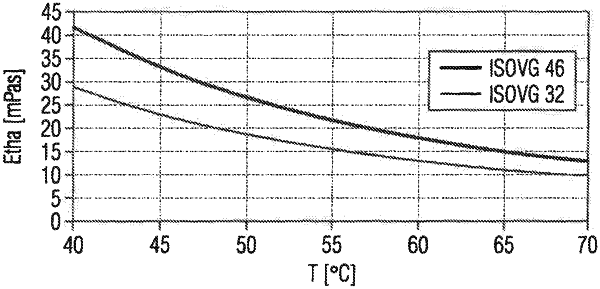| CPC F16N 7/38 (2013.01) [F01M 5/005 (2013.01); F16N 2210/02 (2013.01); F16N 2270/56 (2013.01)] | 11 Claims |

|
1. A control system for reducing rotor vibrations in a system, in particular a variability thereof, in a shafting, in particular a turbine shafting, said control system configured to:
measure a temperature of a bearing of a shaft;
adjust a temperature of oil supplied to the bearing to a temperature as assigned as an output variable in an allocation for minimized rotor vibrations with the measured temperature of the bearing as the input variable;
a valve configured to adjust the temperature of the oil supped to the bearing, with the valve and the bearing being part of an oil circuit;
a mixing valve configured to combine an output of an oil cooler and a bypass of the oil circuit, with the bypass bypassing the oil cooler and connected to the mixing valve, said valve being disposed in the bypass;
for initial assignment with different temperatures of the bearing,
measuring the rotor vibrations,
calculating the respective oil temperatures of the bearing for minimizing the rotor vibrations,
storing the respective oil temperatures of the bearing as input variables, and
storing the associated calculated bearing oil temperatures as output variables in the assignment; and
obtaining empirical values from an operating history of the shafting, and storing the empirical values in the assignment as output variables, so that damping at an early stage is enabled and inertia of the system is compensated.
|